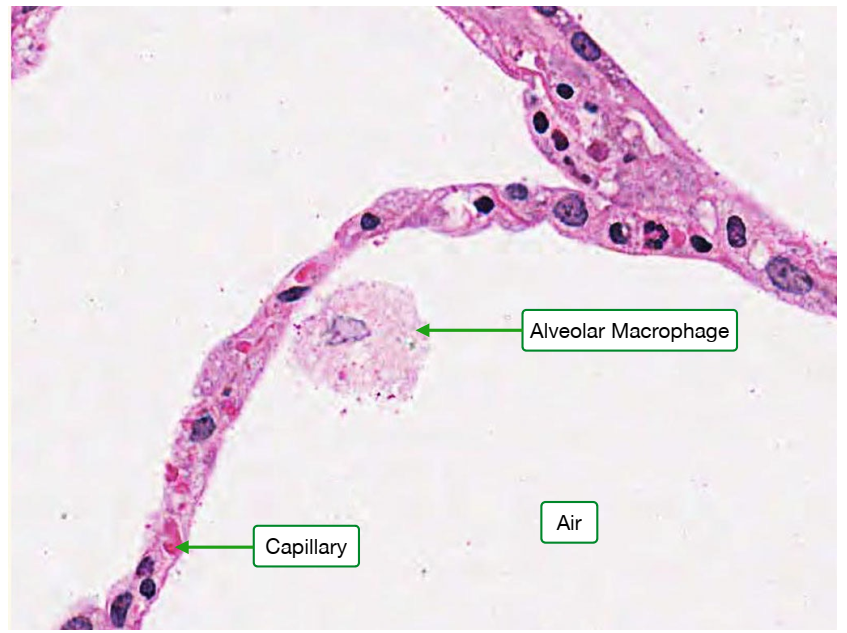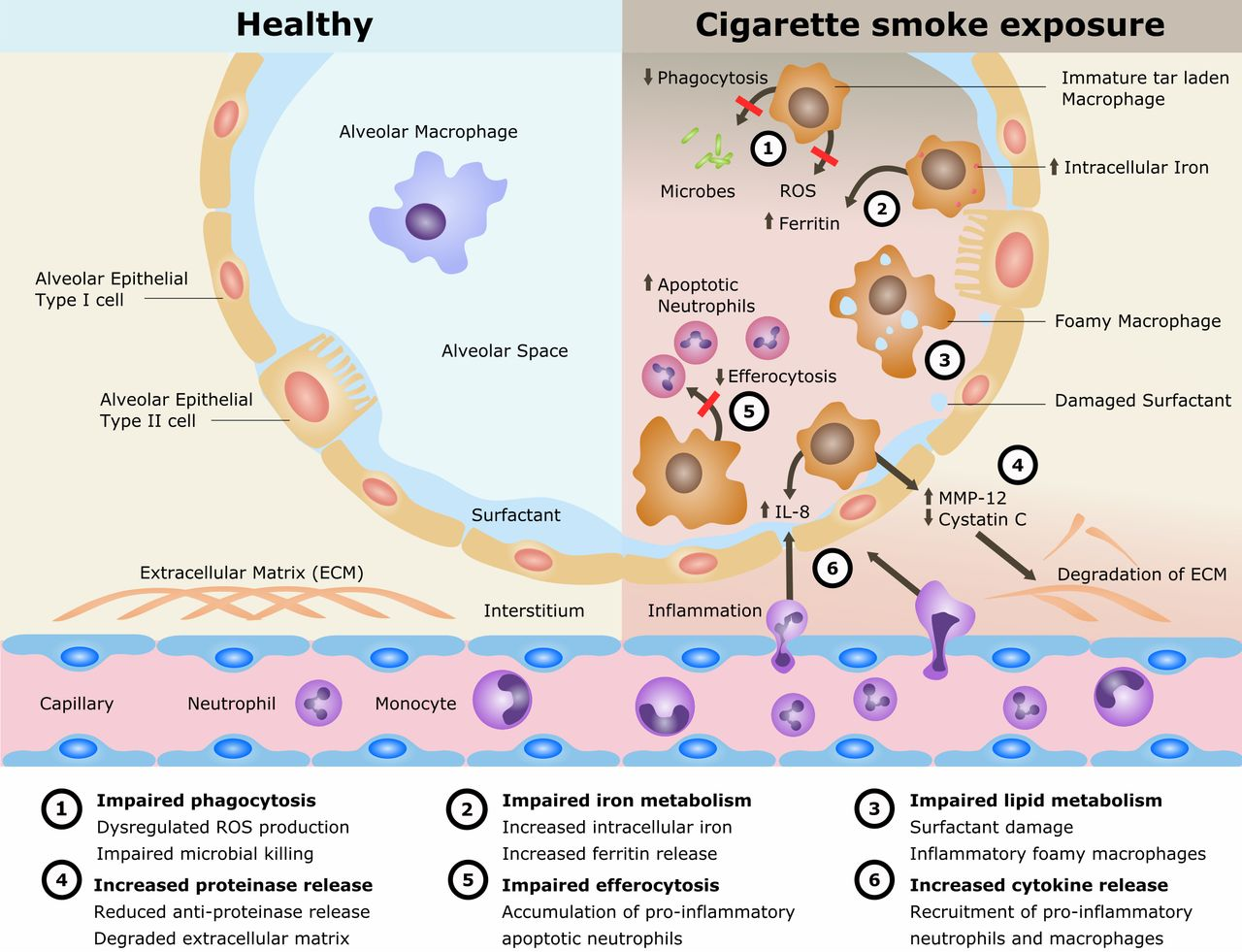9.04 Inhaled Air
1. Warming and Moistening of Inhaled Air
Purpose
- Temperature Regulation: As air passes through the nose and trachea, it is warmed to match the body’s internal temperature.
- Moisturization: Evaporation adds moisture to the inhaled air.
Function
- Protection of Lungs: Prevents the delicate lung tissues from drying out (desiccation), ensuring optimal function and preventing irritation.
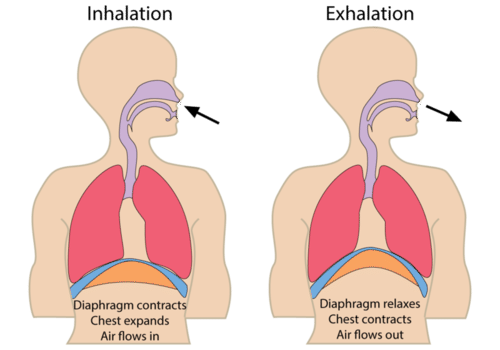
2. Filtration and Cleaning of Inhaled Air
Purpose
- Defense Against Harmful Particles: Inhaled air can carry harmful substances such as dust, sand, pollen, fungal spores, bacteria, and viruses that can damage lung tissue.
Mechanisms for Trapping Particles
Nose Hairs and Mucus
- Function:
- Nose Hairs: Trap larger particles (>5–10 μm) present in the inhaled air.
- Mucus Lining: Captures and holds these particles, preventing them from reaching the lower airways.

Goblet Cells and Mucus Production
- Location: Present in the ciliated epithelium of the trachea and bronchi.
- Structure:
- Goblet Cells: Named for their goblet-like shape, these cells have an upper portion swollen with mucin droplets.
- Mucin:
- Composition: A glycoprotein that imparts stickiness to mucus.
- Function: Traps inhaled particles, making them easier to remove.
- Additional Mucus Sources: Mucous glands beneath the epithelium also produce mucus, enhancing the trapping capability.
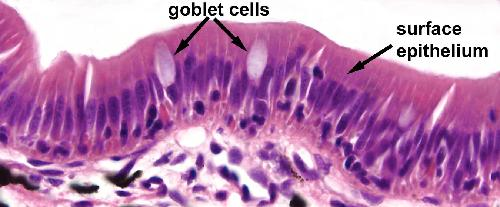
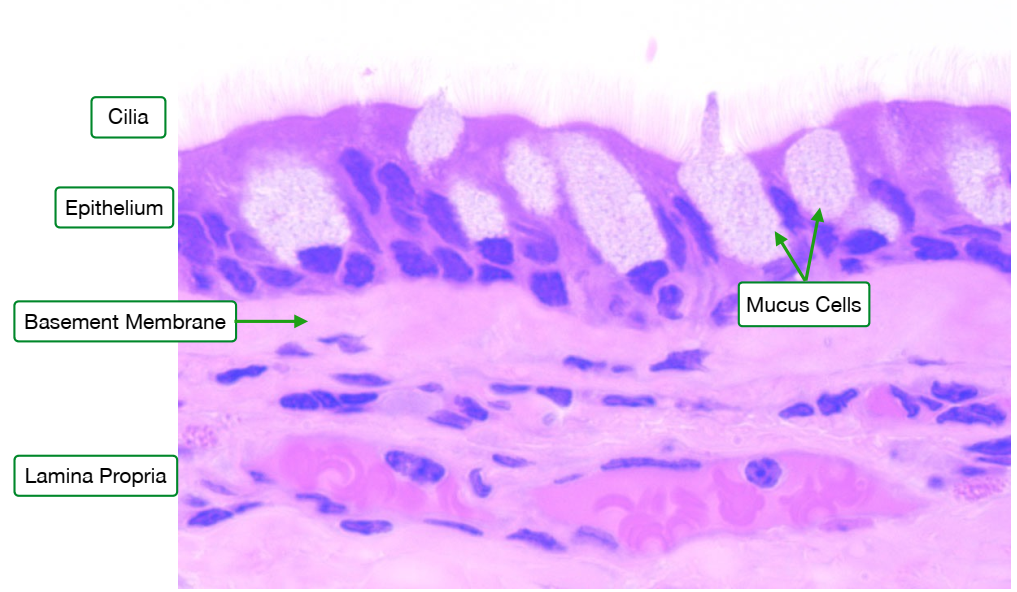
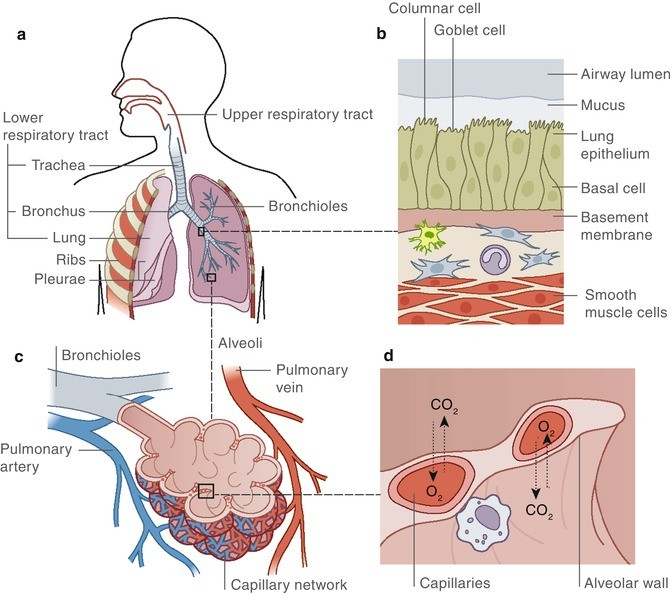
Ciliated Epithelial Cells
- Structure: Epithelial cells equipped with hair-like structures called cilia.
- Function:
- Mucus Transport: Cilia beat in a coordinated, wave-like motion, moving the mucus laden with trapped particles upward toward the larynx at a rate of approximately 1 cm/min.
- Particle Removal: Transports trapped particles and pathogens to the throat, where they are swallowed and destroyed by stomach acid.
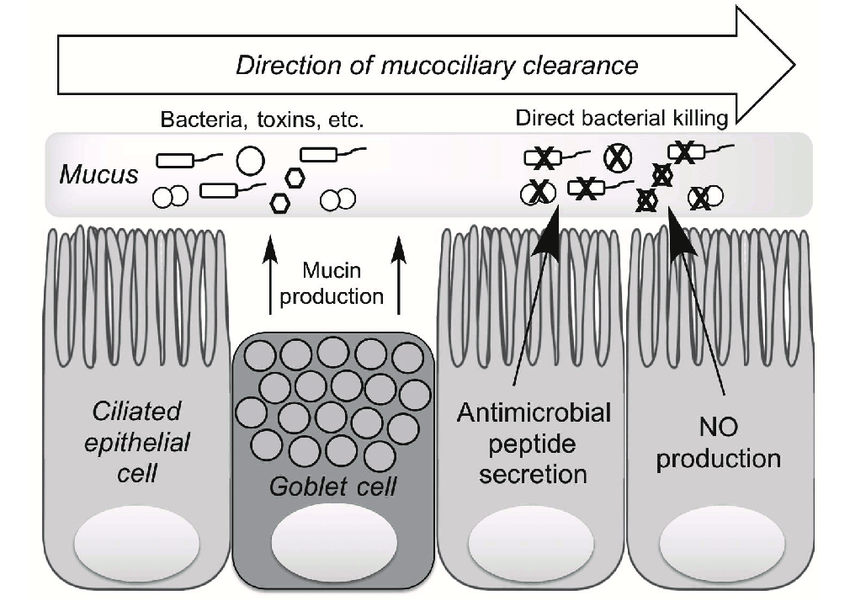
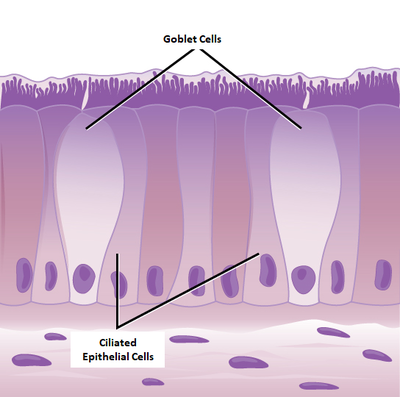
3. Role of Smooth Muscle in Bronchioles
Structure
- Location: Surrounds the bronchioles within the lungs.
- Composition: Contains smooth muscle fibers without cartilage support.
Function
- Airflow Regulation:
- Contraction: Narrows the bronchiole diameter, reducing airflow.
- Relaxation: Widens the bronchiole diameter, increasing airflow.
- Dynamic Adjustment:
- During Exercise: Smooth muscles relax to allow a greater volume of air to reach the alveoli, accommodating increased oxygen demand.
- Flexibility: Absence of cartilage permits the bronchioles to adjust their diameter as needed, providing greater control over airflow distribution.
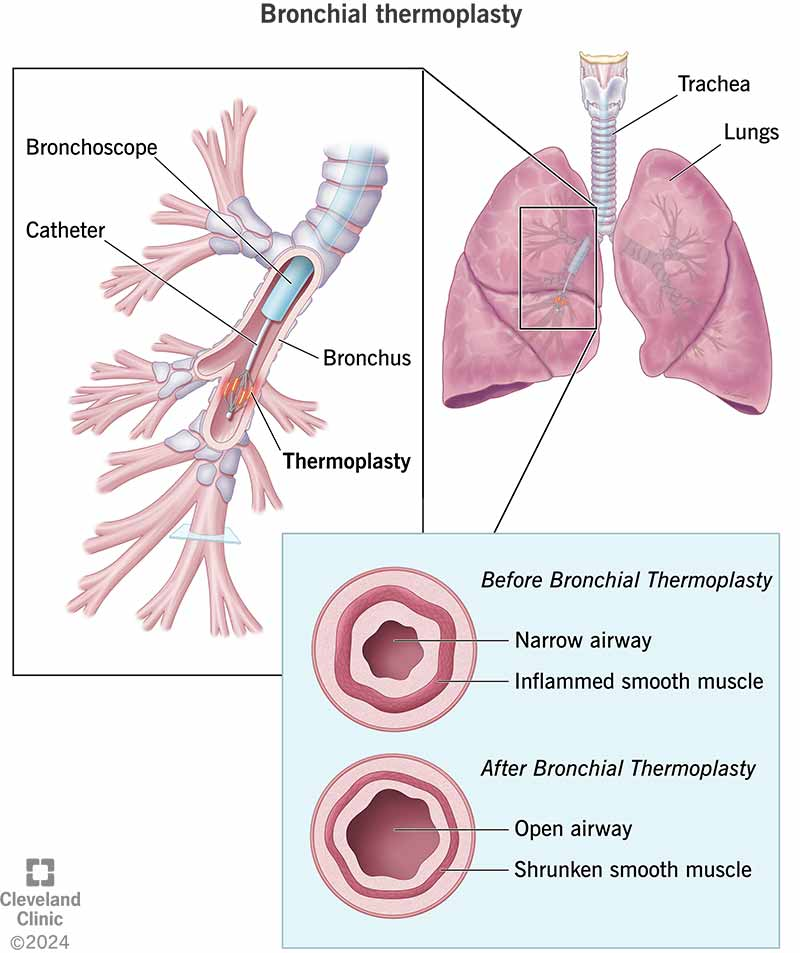
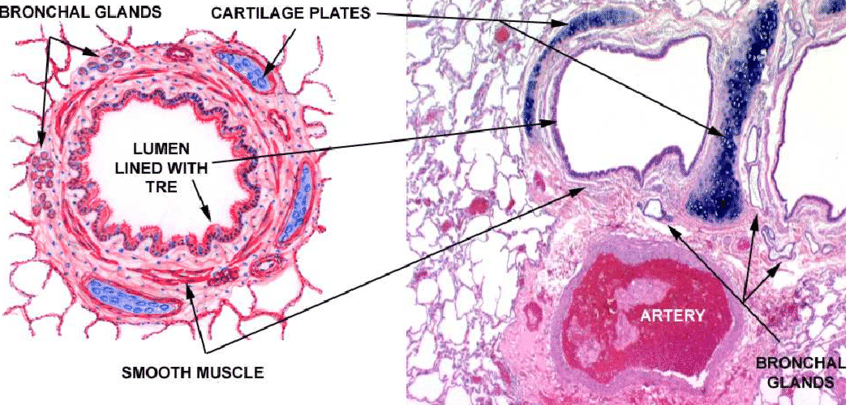
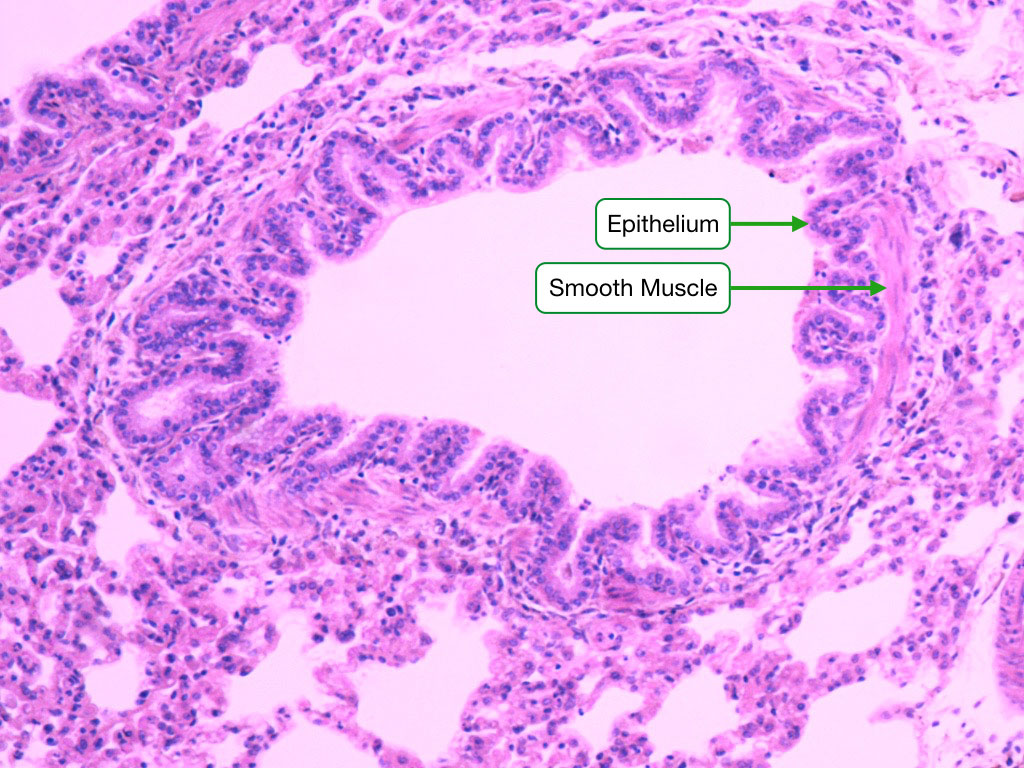
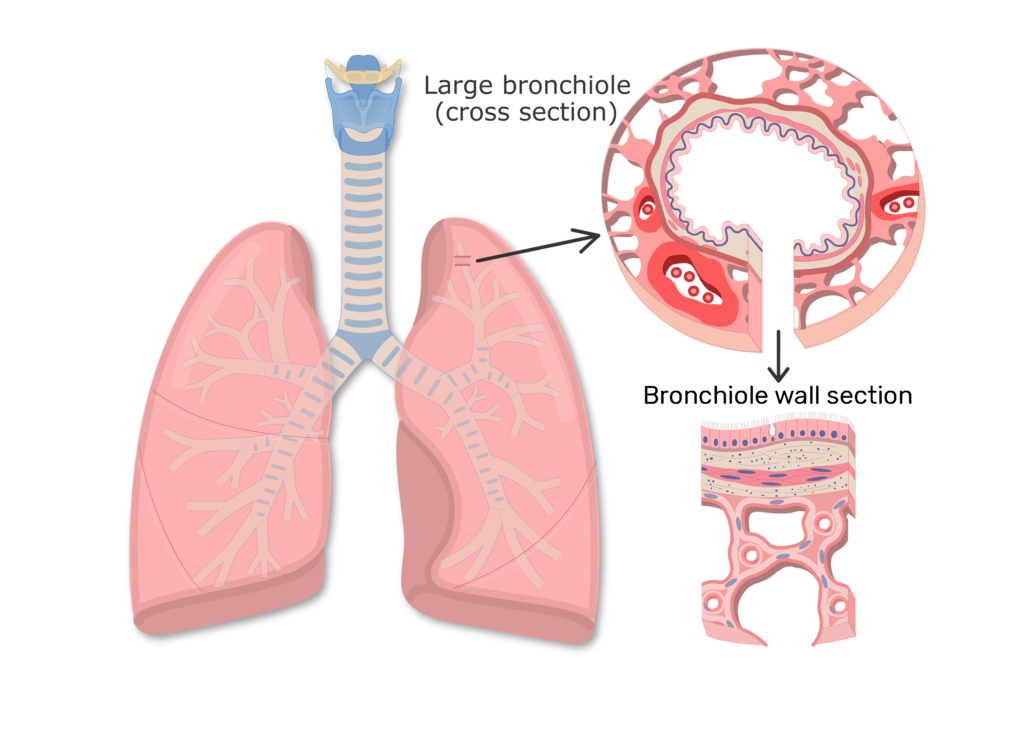
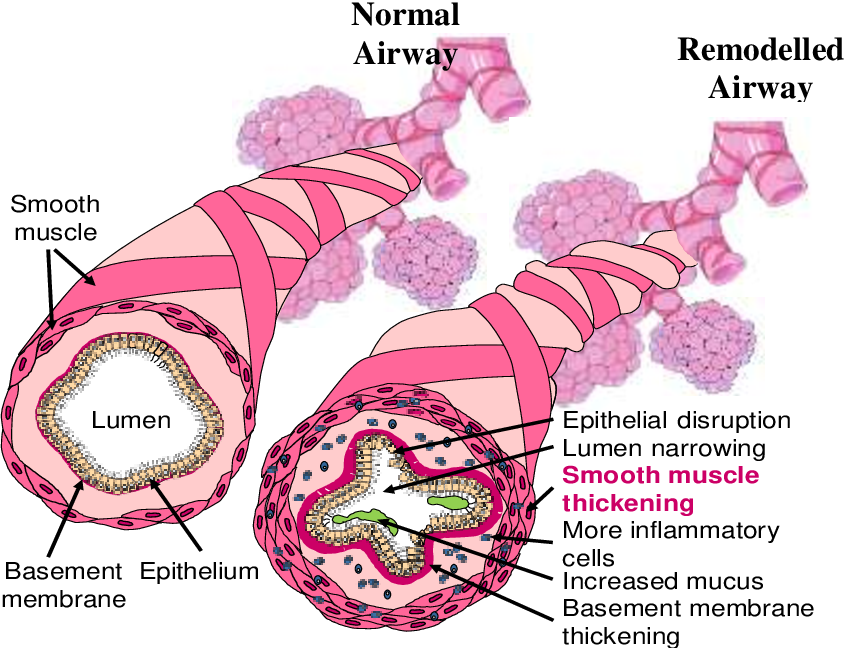
4. Protection Against Airborne Pollutants and Pathogens
Chemical Pollutants
- Examples: Sulfur dioxide, nitrogen dioxide.
- Impact:
- Mucus Interaction: These pollutants can dissolve in mucus, forming acidic solutions.
- Irritation: Acidic mucus can irritate the airway linings, leading to inflammation and discomfort.
Phagocytic Cells (Macrophages)
- Location: Patrol the surfaces of the airways.
- Function:
- Engulfment: Engulf and remove small particles, including bacteria and fine dust.
- Pathogen Clearance: Play a crucial role in the immune response by eliminating inhaled pathogens.
- Response to Infection:
- Immune Activation: During infections, additional phagocytic white blood cells migrate from capillaries to assist in removing pathogens, enhancing the body’s defense mechanisms.
